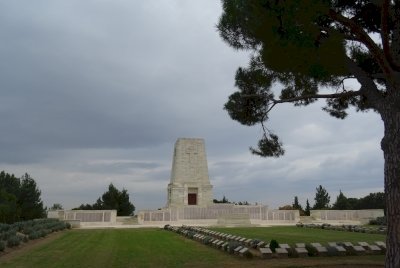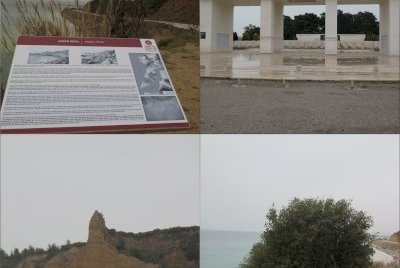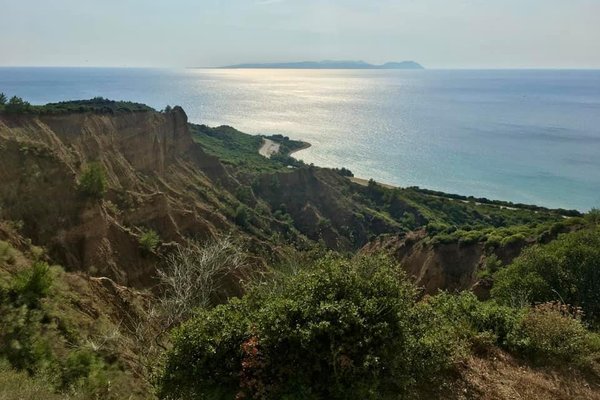Turkiye
Dardanelles and Gallipoli Battle Zones
The First World War Battle Zones of the Dardanelles and Gallipoli represent the land battle during that war. They hold an extensive range of sunken ships, guns, trenches, forts, bastions and a myriad of other war related artefacts together with Turkish, Australian, New Zealand, English and French war graves and memorials.
Site Info
Official Information
- Full Name
- Çanakkale (Dardanelles) and Gelibolu (Gallipoli) Battles Zones in the First World War (ID: 5911)
- Country
- Turkiye
- Status
-
On tentative list 2014
Site history
History of Dardanelles and Gallipoli Battle Zones
- 2014: Added to Tentative List
- Added to tentative list
- Type
- Cultural
- Criteria
Links
- UNESCO
- whc.unesco.org
All Links
UNESCO.org
- whc.unesco.org — whc.unesco.org
Community Information
- Community Category
- Secular structure: Memorials and Monuments
Travel Information
Recent Connections
News
No news.
Recent Visitors
Visitors of Dardanelles and Gallipoli Battle Zones
- Afshin Iranpour
- Alexander Lehmann
- Ali Zingstra
- A. Mehmet Haksever
- Astraftis
- AYB
- bergecn
- Bin
- butterflybird
- Can SARICA
- christof
- Christravelblog
- Corinne Vail
- Digits
- Dimitar Krastev
- Erik Jelinek
- Evgenii
- Frédéric M
- Hasco
- Hdhuntphotography
- henryjiao18
- Hughes1920
- Jarek Pokrzywnicki
- Joel on the Road
- John Smaranda
- Ludvan
- Maciej Gil
- miri2808
- MMM
- Monica Tasciotti
- Patrik
- Philipp Peterer
- Pincze
- Rafał Kałczuga
- Roger Ourset
- Roman Bruehwiler
- Sclowitz
- Shandos Cleaver
- Solivagant
- Szucs Tamas
- Tim Allen
- Timothy C Easton
- Twobaconsandaboston
- Yevhen Ivanovych
Community Reviews
Show full reviewsAstraftis
Dardanelles and Gallipoli Battle Zones
Dardanelles and Gallipoli Battle Zones (On tentative list)

I visited the area on a moody day of December 2022.
The official description is rather vague, as it seems to encompass everything about the war in the whole area, and all the motivations and values of the site appear to lie on the intangible side. Anyway, the whole southern part of Gallipoli's peninsula in front of Çanakkale, this extreme corner of Turkey, is a national park and protected area, and, more in particular, most of the interest gravitates around the ANZAC cove, west of Eceabat on the Aegean. Here, the cove itself and its hinterland are dotted with countless very simple, elegant war cemeteries and explanatory signs and boards. On the hills, many trenches, now mostly in the woods (there were far fewer trees at the time of WW1) can be seen and explored. The site would be simply a beautiful natural park of Mediterranean vegetation and steep hills, were it not for the intense and tragic memories associated with it.
The ANZAC sector, which includes the famous cove, is what most people visit, and so did I, with one of many tours departing from Çanakkale/Eceabat. Most tours go here, and with a reason, as it was the place where the harshest and most important episodes of Gallipoli's campaign took place. To do it justice, a good afternoon is needed, and the same, if not more, for the southern tip around Seddülbahir (so I was told). When I was there, it was a …
Keep reading 0 commentsZoë Sheng
Dardanelles and Gallipoli Battle Zones
Dardanelles and Gallipoli Battle Zones (On tentative list)

Uhhhh, "battle zones", that alone will not bode well with any committee reviewing it for inscription into the WHS list. On my attempt to cover all three war tentative site in one year (the other two in Belgium and France are rather easy to visit anyway) I drove through Gallipoli on my way to Troy. The scenery here is beautiful. It made me think about the Mel Gibson movie a lot but actually none of the scenes were filmed in Turkey. This is an important part of ANZAC history.
The first section I came across was a cemetery. There are lots of these around the area, often split into ANZAC and Turkish cemetery sites. The roads here are really good, with some reports online worrying me they must be outdated. The roads are new and an additional bridge across the bay is now buying built to replace the ferries. My main goal was the Anzac cove, the landing area of the Anzac troops and where they had their main camps. The most interesting site here is the 'Sphinx' rock that doesn't look like anything close to the sphinx and more of a manatee/mermaid situation - you don't get out of the house much and anything looks interesting.
I recommend a drive through Gallipoli for its history and scenery but I don't believe this is world heritage criteria.
Keep reading 0 comments
